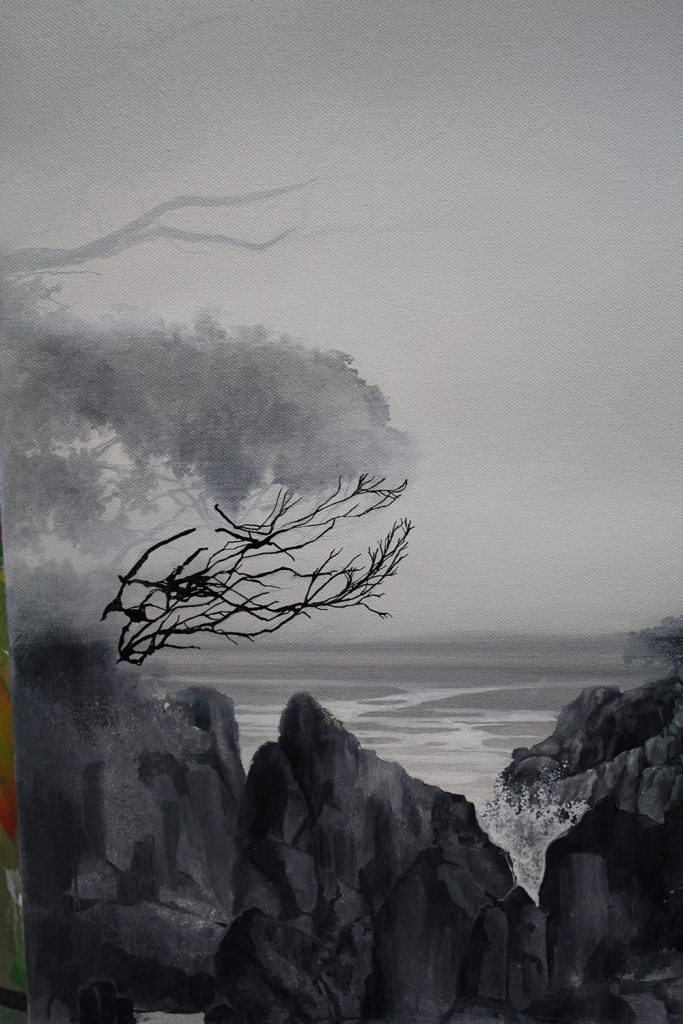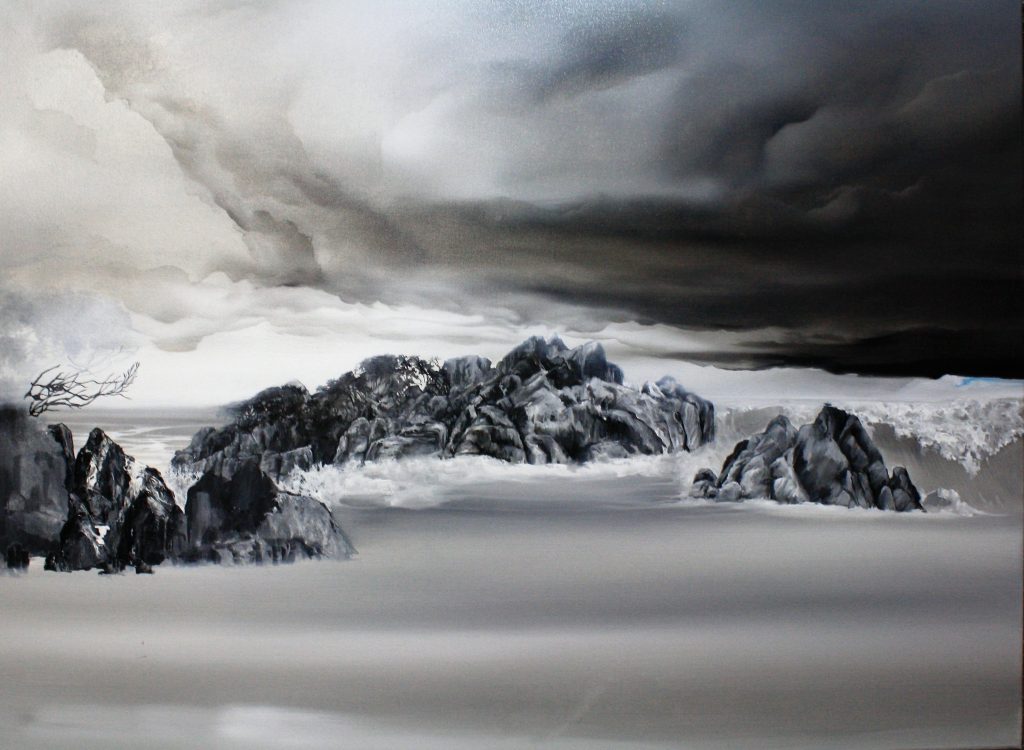These artist’s notes are copyright to Graham Baker and may not be shared or copied without permission. Any enquiries, please email to grahambaker@gmail.com.
Main Beach Tauranga. New Zealand. Monotone Oil painting on canvas. 48”x 36” inches. 120cm x 90cm.
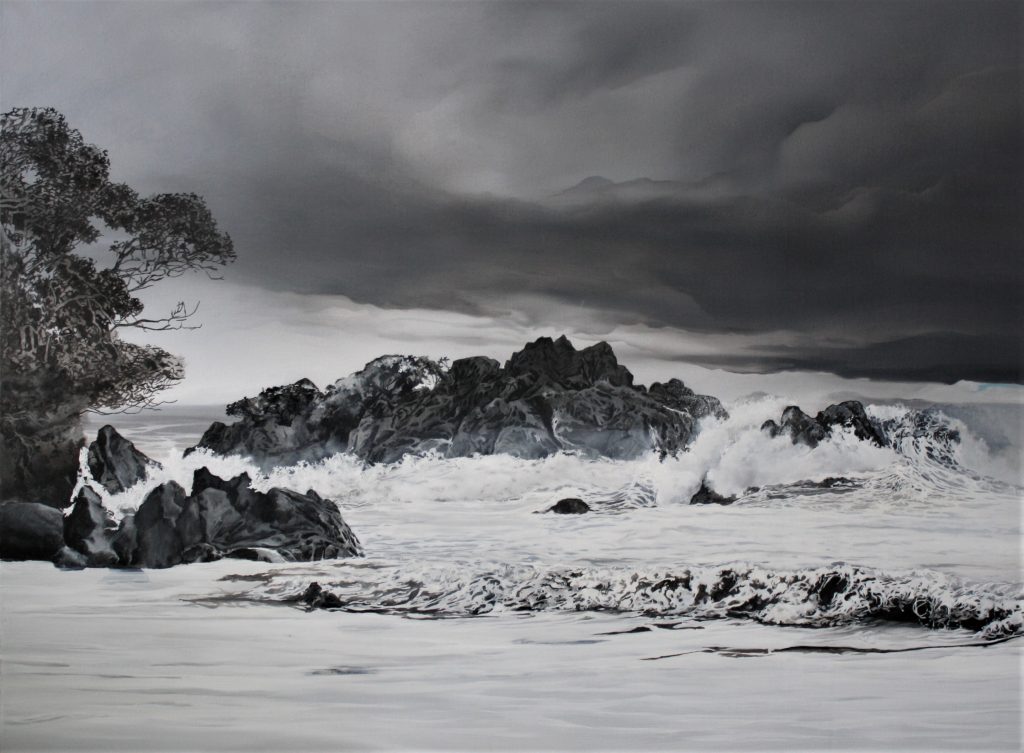
Process
Most natural elements are created by abstract effects. They belong as an integral part of any painting. They look best when produced with a free mind and a simple style. This is why we use large brushes, bold blending and wet on wet application. So that ‘chance elements’ may emerge.
My plan was to throw everything on with very translucent paint and build up the shadows and detail with darker tones gradually. Draw the rocks in place using a basic grid because every other element relied on them being exact. Then return when the paint is dry and do the detailing.
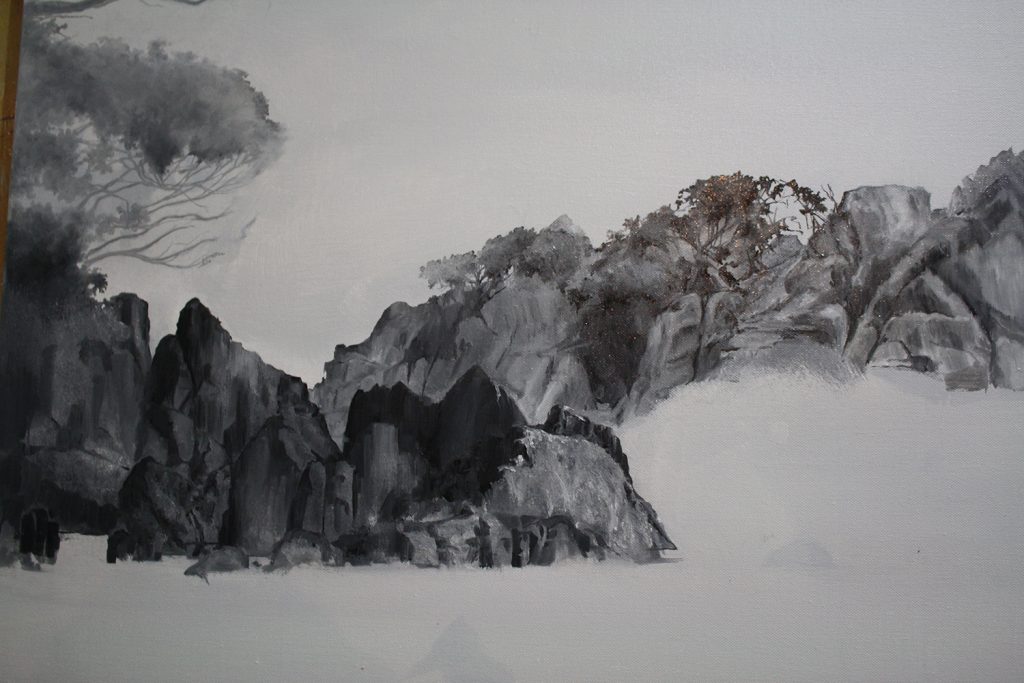
I started softly with the sky, adding darker tones as I moved to the right. Placing the cloud shape in and blending them back to the right with very soft large brushes. Everything was wet including the waves. They were created by dropping white into the puddles of mix. I pulled them into shape adding more white pigment where I could see white water.
The sea was handled in the same manner, broad tonal sweeps dragged along with a large soft brush and left for later.
This then was the method I used initially for this particular painting, painting very quickly while the paint was wet unstable and likely to change.
Detailing was done with a liner brush dragged sideways for the rocks and as it should be used for the finer detailing. It’s a great way to paint rocks, everything wet and touching. One time through then back again with darker tones to sort out the shadows and the light.
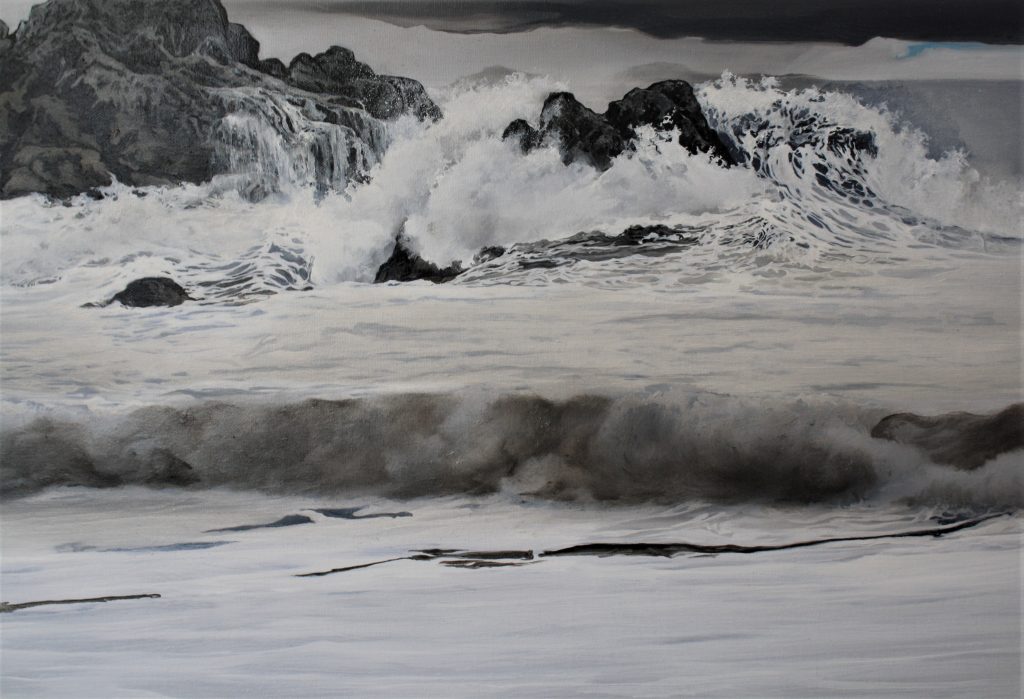
Detailing is essentially bringing elements into sharp contrast with their surroundings. To bring the subject into focus and the attention of the viewer.
Just as we had to decide how much to put in or take out when working out the composition, artists have to judge how much detailing is enough and know when to stop.
Practicing with monotones will help you look carefully at tones without being distracted by the colours. If you have never experimented with this method try a similar procedure with a painting of your own. Start with a light coloured background that will show through the transparent layers to come. Work your medium very thin and wet. From extremely light to extremely dark, finally bring your subject into focus by detailing with opaque contrasts.
These artist’s notes are copyright to Graham Baker and may not be shared or copied without permission. Any enquiries, please email to grahambaker@gmail.com.
